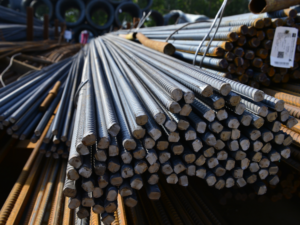Finland-headquartered stainless steel and ferro-chrome producer Outokumpu plans to continue to restrict its ferro-chrome production into the beginning of 2023, the company said on Friday October 7.
Outokumpu now plans to delay the restart of one of its three ferro-chrome furnaces until at least the end of the first quarter of 2023 and will “start change negotiations related to the restriction of the ferro-chrome production.”
The negotiations concern all the employees working at Outokumpu’s ferro-chrome operations, and the planned measures would affect 70 people at most, it said.
The capacity of the furnace that has been shut down is about 30% of Outokumpu’s ferro-chrome capacity of 530,000 tonnes per year.
Outokumpu said the “exceptionally high” price of electricity remains an issue, and that the situation on the energy market had not improved since September 6, when it announced its decision to postpone the restart of one of the three furnaces after a maintenance break.
“Unfortunately, the situation in the energy market has not eased, but the high price of electricity continues to have a negative impact on our cost competitiveness compared to our competitors, mainly from outside Europe,” Martti Sassi, president of the ferro-chrome business area at Outokumpu, said.
“The possible further delay of the restarting of the furnace is a difficult but potentially necessary measure in an utterly exceptional situation. In the change negotiations, we will try to find a solution for us to be able to employ our ferro-chrome personnel in the other Tornio operations,” Sassi added.
Outokumpu began work to optimize its ferro-chrome production in August 2022 by not producing the alloy at the highest electricity prices.
Continuing to restrict the ferro-chrome production will not impact Outokumpu’s stainless steel deliveries, the company said.
“Outokumpu’s ferro-chrome has the smallest carbon footprint in the world. We hope that politicians will take an active role in stabilizing the energy market environment, so that we can continue to profitably produce ferrochrome,” Sassi said.
Published by: Claire Patel-Campbell






